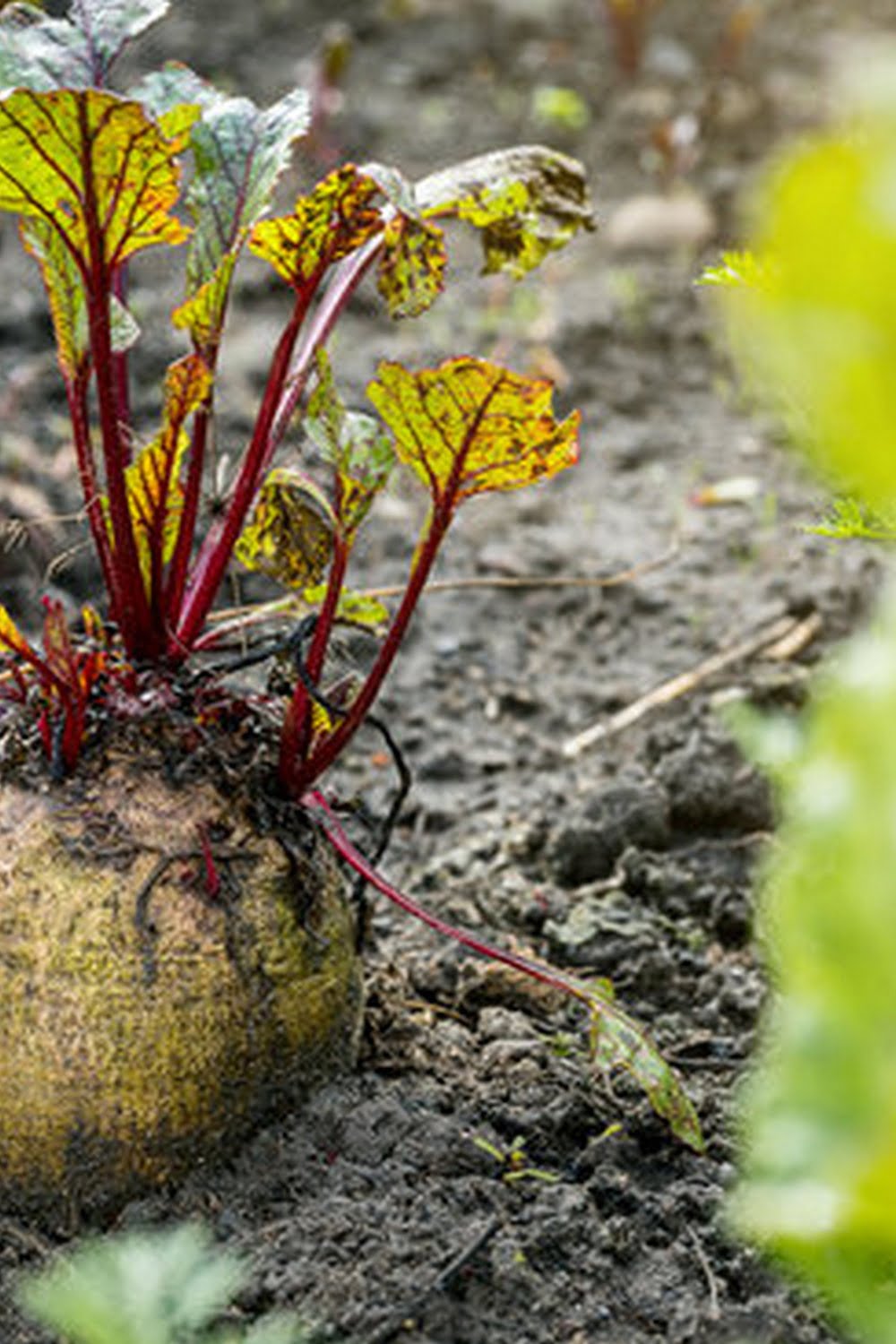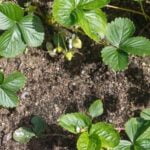Are you interested in starting your very own vegetable garden but don’t know where to begin? This beginner’s guide to vegetable gardening will provide you with all the essential information you need to get started on this rewarding and fulfilling hobby. Vegetable gardening is an excellent activity for beginners due to its simplicity, versatility, and numerous benefits.
When it comes to vegetable gardening, choosing the right location for your garden is crucial for success. Factors such as sunlight, soil quality, and available space can significantly impact the growth and yield of your crops. In addition, having the right tools and supplies is essential for beginner vegetable gardeners. From trowels and watering cans to organic fertilizers and mulch, having the necessary equipment will set you up for a successful gardening experience.
In this comprehensive guide, we will cover everything from selecting the best vegetables for your first garden to preparing the soil for planting. We’ll also walk you through the process of caring for your garden by offering tips on watering practices, pest control, and harvesting.
By the end of this article, you will have valuable knowledge on how to troubleshoot common problems that may arise during your vegetable gardening journey. So let’s dig in (pun intended) and get ready to grow your very own bountiful garden.
Choosing the Right Location for Your Vegetable Garden
When starting a vegetable garden, one of the most important factors to consider is the location. Sunlight, soil quality, and space requirements are all essential for the success of your garden. As a beginner’s guide to vegetable gardening, it’s important to understand how these factors play a crucial role in the growth and development of your plants.
First and foremost, sunlight is essential for the photosynthesis process in plants. Most vegetables require at least 6-8 hours of direct sunlight each day. When choosing a location for your vegetable garden, make sure to find an area that receives ample sunlight throughout the day. Pay attention to any nearby trees or buildings that may cast shadows on your garden space.
In addition to sunlight, soil quality is another key factor in successful vegetable gardening. Before planting, it’s important to assess and improve the soil quality in your chosen location. Conduct a soil test to determine its pH levels and nutrient content. Adding organic matter such as compost or well-rotted manure can help improve soil structure and fertility, providing an ideal environment for plant growth.
Lastly, consider the space requirements for your vegetable garden. Make sure the chosen location provides enough space for your selected vegetable varieties to grow and spread out. Proper spacing between plants will allow for adequate air circulation, which can help prevent diseases and promote healthy growth. Careful consideration of these factors will set you on the right path towards a successful vegetable gardening experience as a beginner.
Essential Tools and Supplies for Beginner Vegetable Gardeners
When starting your journey into vegetable gardening, having the right tools and supplies will ensure your success as a beginner. Here is a list of essential items you will need to get started:
- Garden Gloves: Protect your hands from dirt, thorns, and sharp objects while working in the garden.
- Trowel and Hand Pruners: These are necessary for planting, transplanting, and pruning small plants.
- Watering Can or Garden Hose: Proper watering is crucial for the health of your vegetables, so invest in a quality watering can or hose.
- Garden Fork or Spade: These tools are essential for turning over soil, breaking up clods, and mixing in compost or fertilizer.
In addition to tools, having the right supplies on hand will make it easier to care for your vegetable garden. Here are some important items to have:
- Seeds or Seedlings: Whether you choose to start from seeds or purchase seedlings, make sure you have a variety of vegetables to plant in your garden.
- Quality Soil Mix: Good soil is the foundation for a successful vegetable garden. Look for a mix that is rich in organic matter and drains well.
- Fertilizer or Compost: Providing nutrients to your plants is essential for healthy growth. Choose an organic fertilizer or compost to enrich the soil.
- Mulch: Mulching helps retain moisture, suppress weeds, and regulate soil temperature. Organic mulches such as straw or wood chips are great options.
By having these essential tools and supplies at your disposal, you’ll be well-equipped to embark on your beginner’s guide to vegetable gardening journey with confidence.
Remember that investing in high-quality tools and supplies will make your gardening experience more enjoyable and help ensure the success of your first vegetable garden.
Selecting the Best Vegetables for Your First Garden
When starting a vegetable garden, choosing the right vegetables to grow can make all the difference in your success as a beginner gardener. By selecting easy-to-grow varieties, you can ensure that you have a positive and rewarding experience with your first garden. Here are some of the best vegetables to consider for your beginner’s guide to vegetable gardening:
- Tomatoes – Whether you choose cherry tomatoes or larger beefsteak varieties, tomatoes are relatively low maintenance and produce bountiful crops with proper care.
- Zucchini – Known for their prolific production, zucchini plants are perfect for beginners who want to see quick results in their garden.
- Green Beans – Easy to grow from seed and with minimal care requirements, green beans are a great addition to any beginner’s vegetable garden.
- Lettuce – With a short growing season and the ability to be grown in containers, lettuce is an excellent choice for beginners with limited space or time.
In addition to these easy-to-grow vegetables, it’s also wise for beginner gardeners to consider carrots, radishes, bell peppers, and cucumbers. Each of these vegetables has its own unique set of benefits for novice gardeners, including relatively simple care routines and the potential for high yields.
As a beginner in vegetable gardening, it’s important to prioritize plants that are resilient and forgiving of mistakes. By starting with easy-to-grow varieties like these, you can build confidence as a gardener and enjoy successful harvests from your very first garden.
Preparing the Soil for Planting
Testing Your Soil
Before you start planting your vegetables, it’s important to test your soil to determine its pH level and nutrient content. You can easily purchase a soil testing kit from your local gardening center or have a professional test your soil for you. This step is crucial as it will help you understand what amendments or fertilizers are needed to create the ideal growing conditions for your vegetables.
Amending Your Soil
Once you have determined the condition of your soil, it’s time to amend it if necessary. Adding organic matter such as compost, aged manure, or peat moss can help improve the structure and fertility of your soil. Additionally, incorporating specific fertilizers based on the results of your soil test can provide the essential nutrients that your vegetables need to thrive.
Preparing Raised Beds
If you are planning to grow vegetables in raised beds, now is the time to prepare them. Fill the raised beds with a well-balanced mixture of topsoil, compost, and other organic materials. Raised beds provide excellent drainage and allow you to customize the growing conditions for different types of vegetables. Make sure the soil in raised beds is loosened and fluffed up before planting to encourage healthy root growth for your vegetables.
By taking the time to properly prepare and amend the soil for planting, you’ll give your vegetable garden a strong foundation for successful growth and bountiful harvests. Remember that healthy soil leads to healthy plants, so investing effort into this aspect of gardening will pay off in the long run. With these tips, even beginners can enjoy a thriving vegetable garden in no time.
Planting and Watering Your Vegetable Garden
When it comes to planting and watering your vegetable garden, there are a few key best practices that every beginner should keep in mind. First and foremost, it’s important to choose the right vegetables for your specific climate and growing conditions. This can make a big difference in the success of your garden. Some easy-to-grow vegetables that are great for beginners include lettuce, tomatoes, carrots, and green beans.
Once you’ve selected the best vegetables for your garden, it’s time to consider the proper spacing and placement of your plants. Most vegetables require full sun for at least 6-8 hours per day, so be sure to choose a location in your garden that receives plenty of sunlight. Additionally, make sure to space your plants according to their specific requirements to avoid overcrowding.
In terms of watering, consistency is key. Most vegetables need about 1-2 inches of water per week, either from rainfall or irrigation. It’s important to water deeply but infrequently, as this encourages strong root development. Using a soaker hose or drip irrigation system can help you achieve this goal while also conserving water.
| Vegetable | Amount of Sunlight Needed | Water Needed (Inches Per Week) |
|---|---|---|
| Lettuce | 4-6 hours | 1 inch |
| Tomatoes | 6-8 hours | 1-2 inches |
| Carrots | Full sun | 1 inch |
| Green Beans | At least 6 hours daily | 1 inch (may need more during flowering) |
By following these best practices for planting and watering your vegetable garden, you’ll be well on your way to enjoying a bountiful harvest of fresh, homegrown produce. As with any new endeavor, practice makes perfect, so don’t be discouraged if you encounter some challenges along the way. Gardening is a learning process, and with time and experience, you’ll become more confident in your abilities as a vegetable gardener.
Maintaining and Caring for Your Vegetable Garden
Weeding Tips
Weeding is an essential task in vegetable gardening, as it helps to prevent competition for nutrients and sunlight among your plants. For beginner gardeners, it’s important to stay on top of weed control to ensure the best growth for your vegetables.
One helpful tip is to regularly inspect your garden for any signs of weeds and remove them as soon as possible. Consider using mulch to help suppress weed growth and keep the area around your plants free from unwanted invaders.
Fertilizing Practices
Fertilizing is another critical aspect of caring for your vegetable garden. It’s important to understand the nutrient requirements of your chosen vegetables and provide them with the appropriate fertilizers. For beginners, a general-purpose fertilizer can be a good option to start with. Before applying any fertilizers, be sure to read the instructions carefully and avoid over-fertilizing, which can harm your plants.
Pest Control Methods
Pest control is one of the biggest challenges that beginner vegetable gardeners may face. It’s important to regularly inspect your plants for signs of pests such as insects or diseases. There are various methods for controlling pests in a vegetable garden, including hand-picking pests off plants, using natural predators like ladybugs or lacewings, and applying organic pest control products when necessary. By staying vigilant and addressing pest issues promptly, you can keep your vegetable garden healthy and thriving.
As you progress in your journey with vegetable gardening, you’ll find that maintaining and caring for your garden becomes second nature. With these tips on weeding, fertilizing, and pest control at hand, you’ll be better equipped to address any challenges that may arise while cultivating a bountiful harvest of delicious fresh produce.
Harvesting and Enjoying the Fruits of Your Labor
Once your vegetable garden is thriving, it’s time to enjoy the fruits of your labor. Harvesting your home-grown produce is both rewarding and enjoyable, but there are some tips that can help you maximize yield and flavor.
First and foremost, timing is crucial when it comes to harvesting vegetables. Each type of vegetable has its own ideal time for harvest, so it’s important to do a little research on each variety you are growing. Harvesting too early or too late can result in produce that may not be as flavorful or as tender as it should be.
Another key factor in maximizing yield and flavor is proper storage. Some vegetables need to be harvested at just the right time and used immediately, while others can be stored for longer periods. Storing vegetables properly will ensure that they maintain their freshness and flavor for as long as possible.
Lastly, don’t forget to savor the flavors of your home-grown vegetables. Freshly harvested veggies often have more intense flavors than store-bought produce. Whether you’re simply snacking on cherry tomatoes straight from the vine or creating a delicious meal with your freshly picked squash, taking the time to enjoy the wonderful flavors of your garden-fresh produce is one of the greatest rewards of vegetable gardening.
| Harvesting Tips | Maximizing Yield and Flavor |
|---|---|
| Timing is crucial | Proper storage |
| Variety-specific research | Savoring home-grown flavors |
Troubleshooting Common Problems in Vegetable Gardening
In conclusion, vegetable gardening can be a rewarding and enjoyable hobby for beginners. With the right knowledge and resources, even those new to gardening can successfully grow their own fresh produce. By understanding the importance of choosing the right location, using essential tools and supplies, selecting the best vegetables to grow, preparing the soil properly, and maintaining the garden with care, beginners can avoid common problems and achieve a bountiful harvest.
One of the key factors in overcoming challenges for beginner gardeners is to be prepared for potential issues that may arise. Learning how to troubleshoot common problems such as pests, diseases, nutrient deficiencies, and environmental factors is crucial for ensuring a successful harvest. By familiarizing themselves with these common issues and how to address them, beginners can effectively prevent and manage problems before they become overwhelming.
Ultimately, with dedication and patience, beginners can learn valuable skills through vegetable gardening that will benefit them for years to come. The sense of accomplishment from harvesting and enjoying homegrown vegetables is unmatched. As they gain more experience and knowledge, beginner gardeners will find that their confidence grows along with their gardens. With the right guidance and information at their disposal, anyone can take up vegetable gardening as a fulfilling pastime.
Frequently Asked Questions
What Is the Easiest Vegetable Garden for Beginners?
The easiest vegetable garden for beginners is generally one that includes low-maintenance and easy-to-grow vegetables such as lettuce, tomatoes, cucumbers, and bell peppers. These vegetables don’t require a lot of specialized care and can thrive in a variety of conditions.
What Vegetables Are Easiest to Grow for Beginners?
For beginners, some of the easiest vegetables to grow are lettuce, radishes, green beans, and cherry tomatoes. These vegetables are relatively low-maintenance and can be grown in small spaces like containers or raised beds. They also have relatively short growing seasons, making them ideal for those new to gardening.
What Are the Basics of Vegetable Gardening?
The basics of vegetable gardening include choosing the right location with adequate sunlight and good soil drainage, preparing the soil by adding organic matter and nutrients, planting at the appropriate time according to your region’s climate, watering consistently but not excessively, controlling pests and diseases, and harvesting at the right time for each vegetable.
Additionally, understanding the specific needs of each vegetable in terms of spacing, fertilizing, staking or trellising if necessary is important for successful gardening.

If you’re looking to get into vegetable gardening, or are just looking for some tips on how to make your current garden better, then you’ve come to the right place! My name is Ethel and I have been gardening for years. In this blog, I’m going to share with you some of my best tips on how to create a successful vegetable garden.





